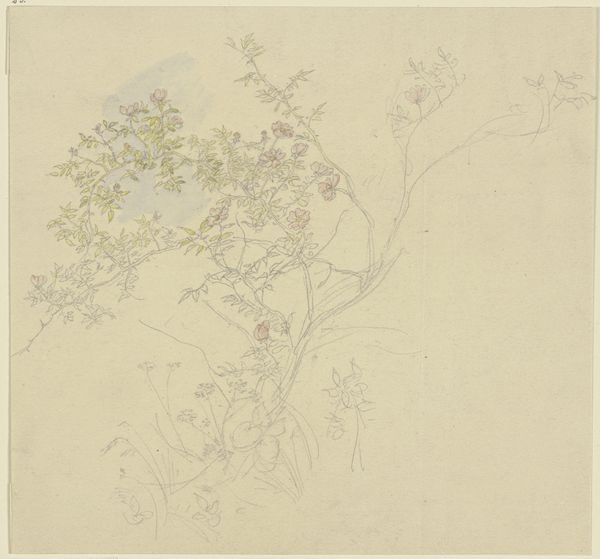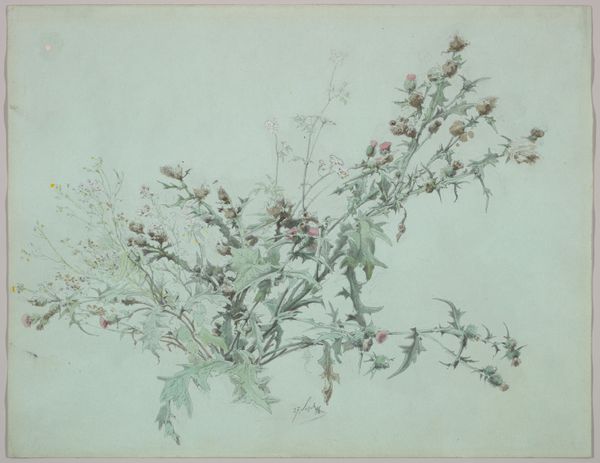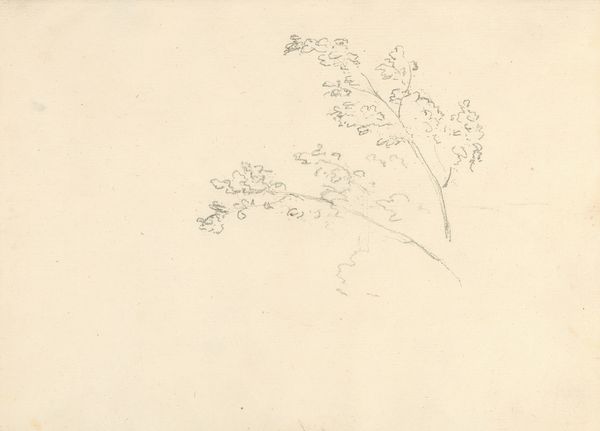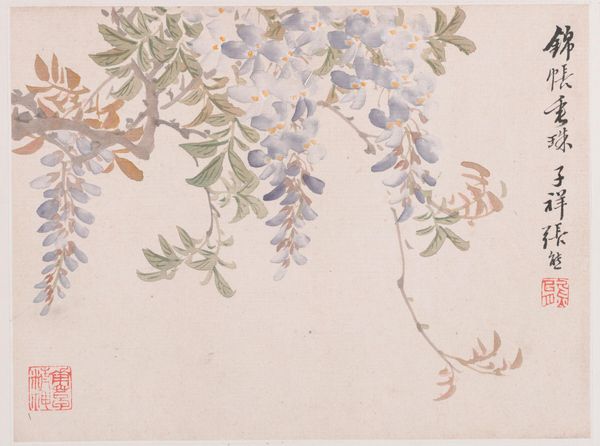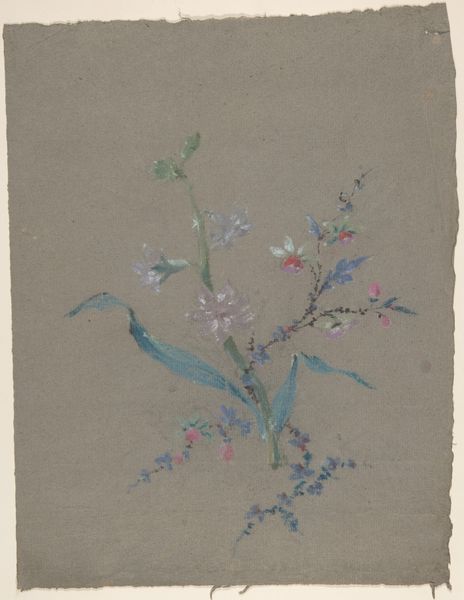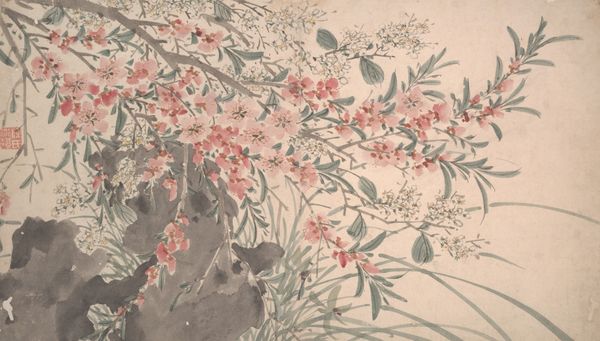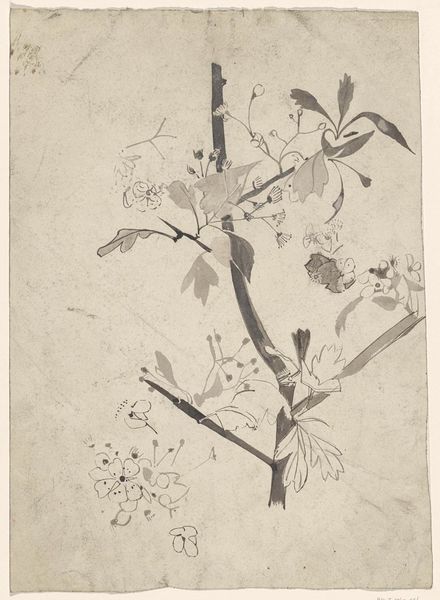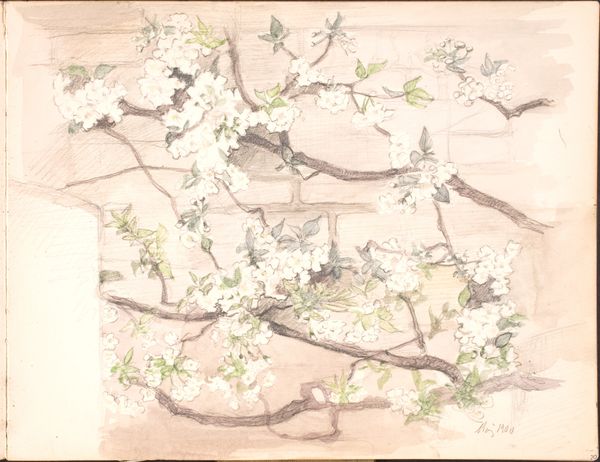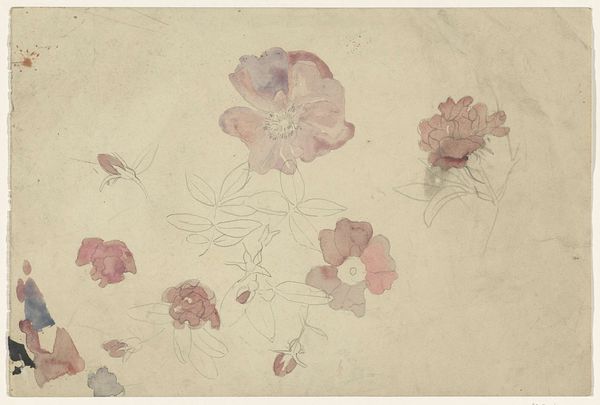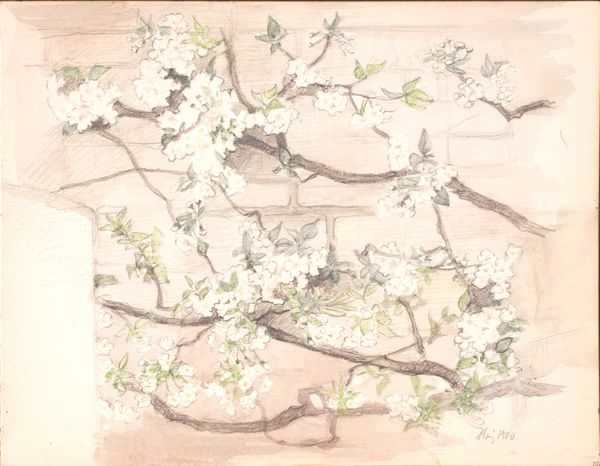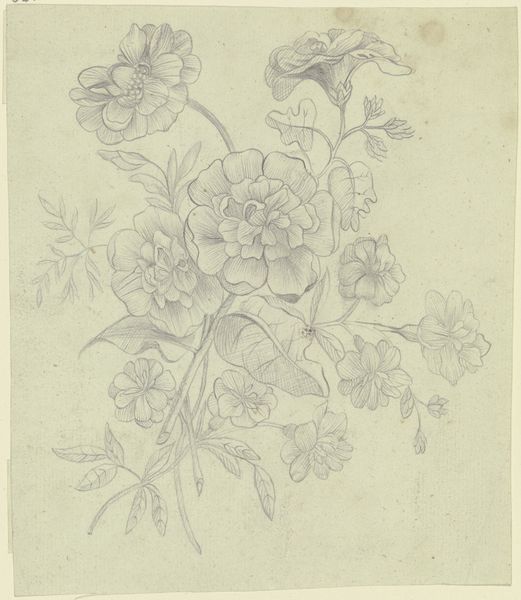
drawing, paper, pencil
#
drawing
#
etching
#
paper
#
pencil
#
botanical drawing
Copyright: Public Domain
Curator: Take a moment to admire this piece from the Städel Museum’s collection: it's a botanical drawing, referred to as “Branch with Blooming Roses”. Editor: Oh, how lovely. It feels so delicate, like a whisper of nature caught on paper. Is that pencil and… etching, maybe? It’s so soft, almost dreamlike. Curator: Yes, pencil and etching on paper. Without a known date of creation or attribution to a specific artist, this work raises intriguing questions about its purpose and the context in which botanical studies were used. Editor: I'm really drawn to how the branches reach out, not perfectly rendered, but full of life. Like the roses are holding little secrets. You almost want to step right into that garden. Was there a big movement around these drawings? It feels tied to other forms in similar moments in time. Curator: Botanical drawings in this era frequently served various functions. Some documented scientific discoveries for sharing in scientific discourse, while others found application as models for designs within the decorative arts. But it’s difficult to make any firm conclusions without that contextual evidence. The rose motif had such a hold in Western society—do you feel its common themes are being touched upon here? Editor: Roses always feel loaded, don't they? Love, loss, beauty, decay... here, the sketch-like quality feels different though, lighter than traditional rose depictions. Not really symbols, maybe just impressions? Did it belong to a set? A series? I’m finding myself captivated with the process rather than any specific symbolism; the artist just experimenting with seeing the natural world and documenting. Curator: Potentially. One of the fascinating points about a piece like this is considering where it fits into art history. Did it challenge or conform to particular expectations about naturalistic representation? How was the natural world depicted and used during the era the drawing emerged from? I find the role of the public important here too, who exactly the drawing would be catering to. Editor: Thinking about it now...I feel the rawness elevates it above the traditional "romantic rose" trope, it is, as we both previously stated, so subtle and understated. Curator: Exactly, the study can also act as a quiet reminder that artistic and cultural contexts have profoundly influenced what we observe in it now. Editor: Absolutely. These kinds of hidden narratives enrich how we encounter a simple subject on a subtle, muted sheet. It lets our imagination blossom too.
Comments
No comments
Be the first to comment and join the conversation on the ultimate creative platform.
